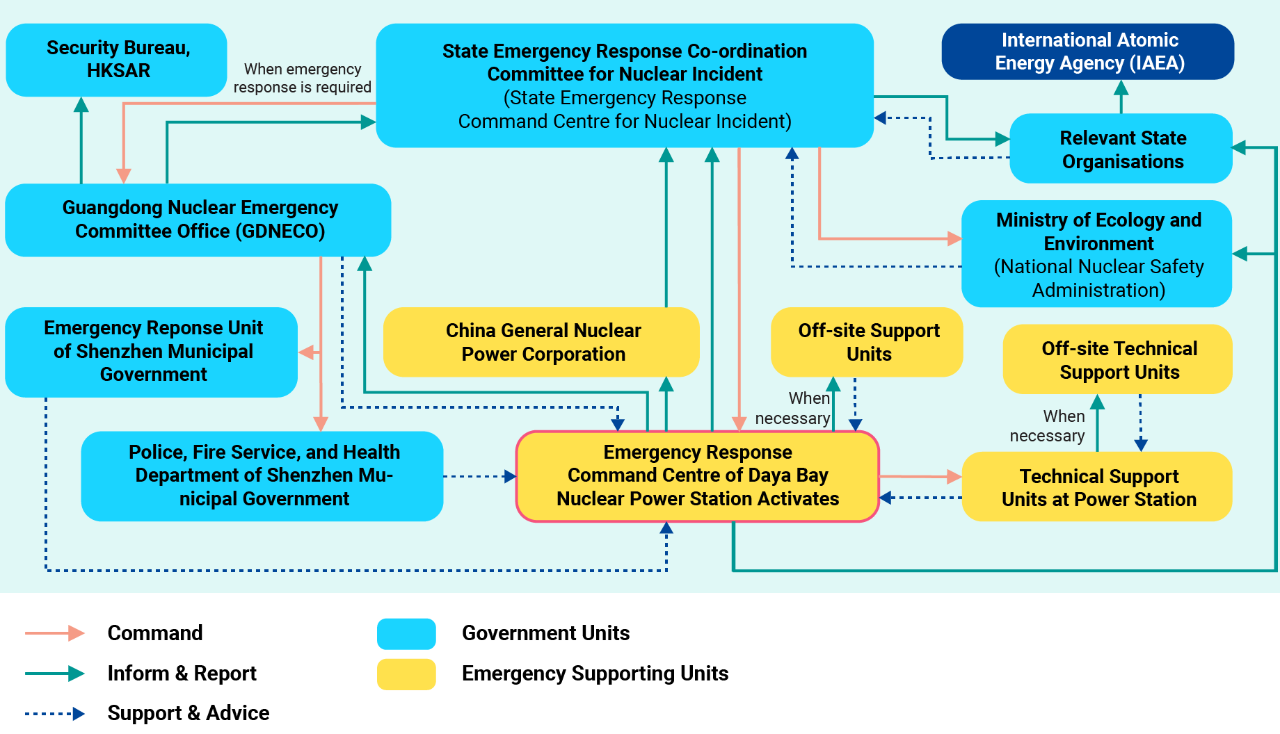Tritium is a by-product generated in the nuclear power production process and the release of tritium is a normal operating procedure for nuclear power stations adopting the Pressurized Water Reactor technology.
Handling of Tritium Discharges
There is a purification system for the nuclear power reactor in which the radionuclides carried in the reactor cooling water are extracted by filtration or electrolytic processes to control its level of radioactivity. Residuals of the extraction process, including tritium found in the water bearing the radionuclides, are collected and stored until their radioactivity has decreased to an acceptable level and are subsequently released in a controlled process either in gaseous or liquid form to the environment.
The impact of Radiological Releases on the Environment
Tritium has a weak radioactivity and it does not accumulate in human tissue or organs and is excreted normally after being ingested into the human body. Its overall health impact compared to other radionuclides is therefore low. As tritium has a far lower health impact than other radionuclides, typically higher regulatory limits for liquid radiological releases are prescribed for tritium than other radionuclides at the nuclear power station site. These limits are in line with those being adopted for the nuclear power stations in France. According to relevant national regulations, the annual radiation dosage to people in the vicinity of a nuclear power station site should not exceed 0.25 millisieverts (mSv) per person per annum (about one tenth of typical background radiation dosage received by a Hong Kong resident in a year).


